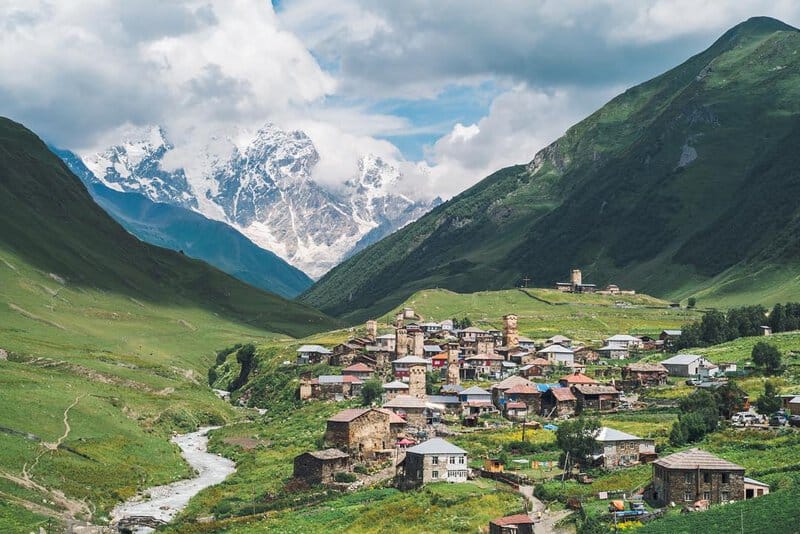 The tiny village of Ushguli © Timothy Cohen
The tiny village of Ushguli © Timothy CohenLonely Planet Pathfinder Timothy Cohen has recently returned from a trip to Georgia – one of our Best in Travel countries to visit in 2018 – where he spent time trekking in the Caucasus and exploring Tbilisi, the country’s colourful capital…
I have just been travelling through Georgia for three weeks, and it definitely exceeded all my expectations on every possible level! From the snow-capped mountains of the Caucasus to the vineyards and arid plains of the Kakheti region, passing through the bustling capital of Tbilisi and the modern port city of Batumi, Georgia has much to offer.
All of this falls flat however, without the heart and soul of the country: the Georgians themselves. The kindness and hospitality of the people is renowned, and you will often be invited into a family home to drink homemade wine and try tasty food. Now is the perfect time to explore this underrated country before everyone else does!
Colourful Tbilisi
I landed in Tbilisi, a capital of contrasts, where centuries-old buildings mix with bold, contemporary architecture. The old city has managed to preserve its historical charm with its fortress, sulphur baths, historic buildings and tangles of pedestrian alleys around every corner.
Georgia and Azerbaijan’s blurred lines
Davit Gareja is one of Georgia’s most incredible historic sites, and its uniqueness is apparent in more ways than one. Its location on the border with Azerbaijan, its situation along a steep escarpment and its setting in a lunar landscape made the visit to this monastery an otherworldly experience.
Since the border between the two countries is right here, some Azerbaijan guards patrol in the area, and I had to make sure I was never overstepping the line. Walking along the ridge, the view combines the plains of both Georgia on the left, and Azerbaijan on the right.
Church on the hill
It’s better than Ed Sheeran’s song Castle on the Hill – I promise! Deep in the Kazbegi region lies what may be the most emblematic sight of Georgia: Tsminda Sameba Church. The city of Kazbegi is overlooked by the church which, at 2200m, is surrounded from all sides by the jaw-dropping mountains of the Greater Caucasus. At twilight, the view is enhanced by the last golden rays of sunlight flowing over the wind-battered stone walls of the church.
A glimpse into South Ossetia’s past
While everyone is focused on Kazbegi and the surrounding mountains, I decided to explore Truso Valley, scattered with ancient South Ossetian hamlets in ruins, frozen in time, but still inhabited by a small number of farmers. A few houses are still standing somehow, alongside ancient structures. The tiny hamlet of Abano lies deep in the Truso Valley, and is the last settlement before the South Ossetian border, 2km further along. There are only a handful of people, including a few nuns, still living here.
Meet the koshi
The mountainous region of Svaneti is home to the koshi. These old defensive towers that were built between the 9th and 13th century shape Svaneti’s landscape, and have became the emblem of the region. Around 175 of them can still be found in the different villages nowadays. Mestia is the only town in the region and it gets pretty busy in summer. From the top of one of the towers, the beauty and peaceful atmosphere of the region still seem intact, especially after the rain.
Europe’s highest continuously inhabited settlement
The village of Ushguli is remote, unbelievably beautiful, and lies at the foot of the highest mountain in the country – Mount Shkhara (5201m). It seems like time has taken no toll on this place and its 200 or so inhabitants. Here, there are horses running free in the valley, used to harvest the crops or as means of transport for locals. The road from Mestia is long, meandering and really bumpy – it’s best to ride it on an empty stomach… But what a view when you finally arrive in Ushguli and are faced with the great snow-covered Shkhara overlooking the village full of ancient Svan towers!
READ ALSO Paris Haute Couture Fashion Week Street Style
First appeared on lonelyplanet.com

